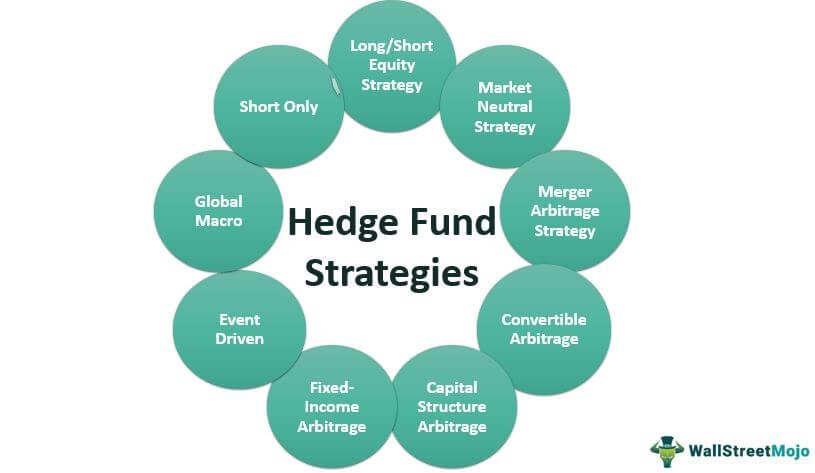Understanding hedge fund strategies is key to navigating the complex world of investments. But where do you start? In this article, we will dive into the fundamentals of hedge fund strategies, answering your burning questions and shedding light on the most effective approaches. Whether you’re a seasoned investor or just beginning to explore this realm, this guide will equip you with the knowledge you need to confidently make informed decisions. So, let’s demystify hedge fund strategies and uncover the secrets behind their success.
Understanding Hedge Fund Strategies
Introduction to Hedge Funds
Hedge funds are alternative investment vehicles that aim to generate high returns for their investors by utilizing various investment strategies. These funds are typically available only to accredited or institutional investors due to their complex nature and higher risk profile. Understanding the different hedge fund strategies is essential for investors looking to diversify their portfolios and potentially earn superior returns. In this article, we will explore some of the most common hedge fund strategies and how they work.
Long/Short Equity Strategy
One of the most well-known hedge fund strategies is the long/short equity strategy. In this strategy, hedge fund managers take long positions in stocks they believe will increase in value and short positions in stocks they believe will decrease in value. By balancing long and short positions, the fund aims to generate positive returns regardless of the overall market direction.
This strategy allows hedge funds to potentially profit from both rising and falling markets. When the market is bullish, the fund benefits from its long positions. Conversely, during bearish market conditions, the fund can profit from its short positions. By actively managing these positions, hedge fund managers aim to outperform traditional long-only equity investments.
Global Macro Strategy
The global macro strategy focuses on making investment decisions based on macroeconomic trends and events happening around the world. Hedge fund managers utilizing this strategy analyze various factors such as interest rates, GDP growth, geopolitical events, and currency movements to identify investment opportunities.
These funds take positions in various asset classes such as stocks, bonds, currencies, and commodities. The goal is to profit from changes in global economic conditions. For example, if a fund manager anticipates a decline in a specific country’s currency, they may take short positions in that currency or its related assets.
Global macro hedge funds often employ leverage to maximize their potential returns. However, this strategy also comes with higher risks. It requires a deep understanding of global markets and the ability to accurately predict macroeconomic trends.
Event-Driven Strategy
Event-driven hedge funds aim to profit from specific events that can impact the value of a company or an industry. These events can include mergers and acquisitions, bankruptcies, regulatory changes, or other corporate actions. The fund managers analyze these events and take positions accordingly to generate returns.
There are three main sub-strategies within the event-driven strategy:
1. Merger Arbitrage:
Merger arbitrage involves taking positions in companies that are involved in a merger or acquisition. The fund will go long on the target company’s stock and short on the acquiring company’s stock. The objective is to profit from the price discrepancy between the merger announcement and the completion of the deal.
2. Distressed Securities:
Distressed securities strategy focuses on investing in companies that are undergoing financial distress, such as bankruptcy or restructuring. The fund managers identify undervalued securities of these distressed companies and take positions with the expectation that their value will increase as the company recovers.
3. Special Situations:
Special situations strategy involves investing in specific corporate events or opportunities that do not fit within the other event-driven sub-strategies. This can include spin-offs, divestitures, or other unique situations where the fund managers see potential for significant returns.
Quantitative Strategy
Quantitative hedge funds, also known as “quants,” rely on complex mathematical models and algorithms to make investment decisions. These models analyze vast amounts of historical data to identify patterns and trends that can be exploited for profit.
Quants use computer-driven trading strategies to execute trades based on their models’ signals. These strategies can include statistical arbitrage, trend-following, or market neutral approaches. The goal is to remove human emotions from the investment process and take advantage of market inefficiencies.
Quantitative hedge funds often have a high turnover of trades, aiming to capture small price discrepancies that occur over short periods. They rely heavily on technology and employ teams of mathematicians, physicists, and computer scientists to develop and refine their trading models.
Managed Futures Strategy
Managed futures strategy, also known as commodity trading advisors (CTAs), focuses on trading futures contracts across various asset classes such as commodities, currencies, and indices. These funds aim to profit from both rising and falling markets by taking long and short positions in futures contracts.
CTAs often utilize trend-following strategies, where they identify and ride trends in the futures markets. They may also use systematic models to determine when to enter or exit positions. The objective is to capture the momentum of price movements and generate positive returns.
Managed futures hedge funds provide diversification benefits as they have low correlations with traditional stock and bond investments. Additionally, they offer exposure to commodities and other alternative asset classes, which can act as a hedge against inflation.
Understanding hedge fund strategies is crucial for investors seeking alternative investment opportunities. Each strategy comes with its unique characteristics, risk profile, and potential for returns. By diversifying across different hedge fund strategies, investors can potentially benefit from the expertise of skilled fund managers and improve their investment performance.
Remember, investing in hedge funds involves higher risks compared to traditional investments. It is essential to carefully evaluate a fund’s track record, investment approach, and risk management practices before investing. Consulting with a financial advisor or professional is recommended to determine the suitability of hedge funds based on individual investment goals and risk tolerance.
By exploring different hedge fund strategies, investors can gain insights into how these funds operate and potentially identify opportunities that align with their investment objectives.
Hedge fund strategies: Long short 1 | Finance & Capital Markets | Khan Academy
Frequently Asked Questions
Frequently Asked Questions (FAQs)
What is a hedge fund strategy?
A hedge fund strategy refers to a specific approach or methodology used by hedge funds to allocate their investments and generate returns. Each strategy is designed to achieve different objectives and manage risk in various market conditions.
Why do hedge funds use different strategies?
Hedge funds use different strategies to take advantage of various market opportunities, reduce risk, and generate consistent returns. By diversifying their strategies, hedge funds can adapt to changing market conditions and optimize their investment performance.
What are some common hedge fund strategies?
Some common hedge fund strategies include long/short equity, global macro, event-driven, arbitrage, and distressed investing. Each strategy utilizes different techniques to identify investment opportunities and manage risk.
How does the long/short equity strategy work?
The long/short equity strategy involves taking both long and short positions in stocks. Fund managers identify undervalued stocks they believe will increase in value (long positions) and overvalued stocks they expect to decline (short positions). The goal is to generate returns regardless of overall market direction.
What is the global macro strategy?
The global macro strategy focuses on analyzing macroeconomic factors and making investment decisions based on anticipated global trends. Fund managers consider factors such as interest rates, geopolitical events, and economic indicators to identify opportunities across various asset classes, including currencies, bonds, and commodities.
How does event-driven investing work?
Event-driven investing involves taking positions in companies undergoing significant corporate events, such as mergers, acquisitions, bankruptcies, or legal disputes. Hedge fund managers aim to profit from price fluctuations resulting from these events, often through strategies like merger arbitrage or distressed debt investing.
What is arbitrage in hedge fund strategies?
Arbitrage involves exploiting price discrepancies in different markets to generate profit with minimal risk. Hedge fund managers might engage in various types of arbitrage, such as merger arbitrage (exploiting price gaps during a merger or acquisition) or statistical arbitrage (identifying pricing anomalies based on historical trends).
What is distressed investing?
Distressed investing focuses on investing in companies or securities that are experiencing financial distress or undergoing bankruptcy. Hedge fund managers analyze the potential for recovery or restructuring, aiming to profit from the eventual improvement in the distressed company’s value.
How do hedge fund strategies manage risk?
Hedge fund strategies employ various risk management techniques, including diversification, hedging, and rigorous analysis of investment opportunities. By combining different strategies and adjusting positions based on market conditions, hedge funds aim to minimize risk and protect capital while maximizing returns.
Final Thoughts
Understanding hedge fund strategies is crucial for investors looking to navigate the complex world of hedge funds. By comprehending these strategies, investors can make informed decisions and potentially generate significant returns. Hedge funds employ various strategies such as long-short, global macro, event-driven, and quantitative. Each strategy has its own objectives, risk profile, and investment approach. By studying and analyzing these strategies, investors can gain insights into the factors that drive hedge fund performance. Ultimately, understanding hedge fund strategies enables investors to select the most suitable funds and build a diversified portfolio to achieve their investment goals.



